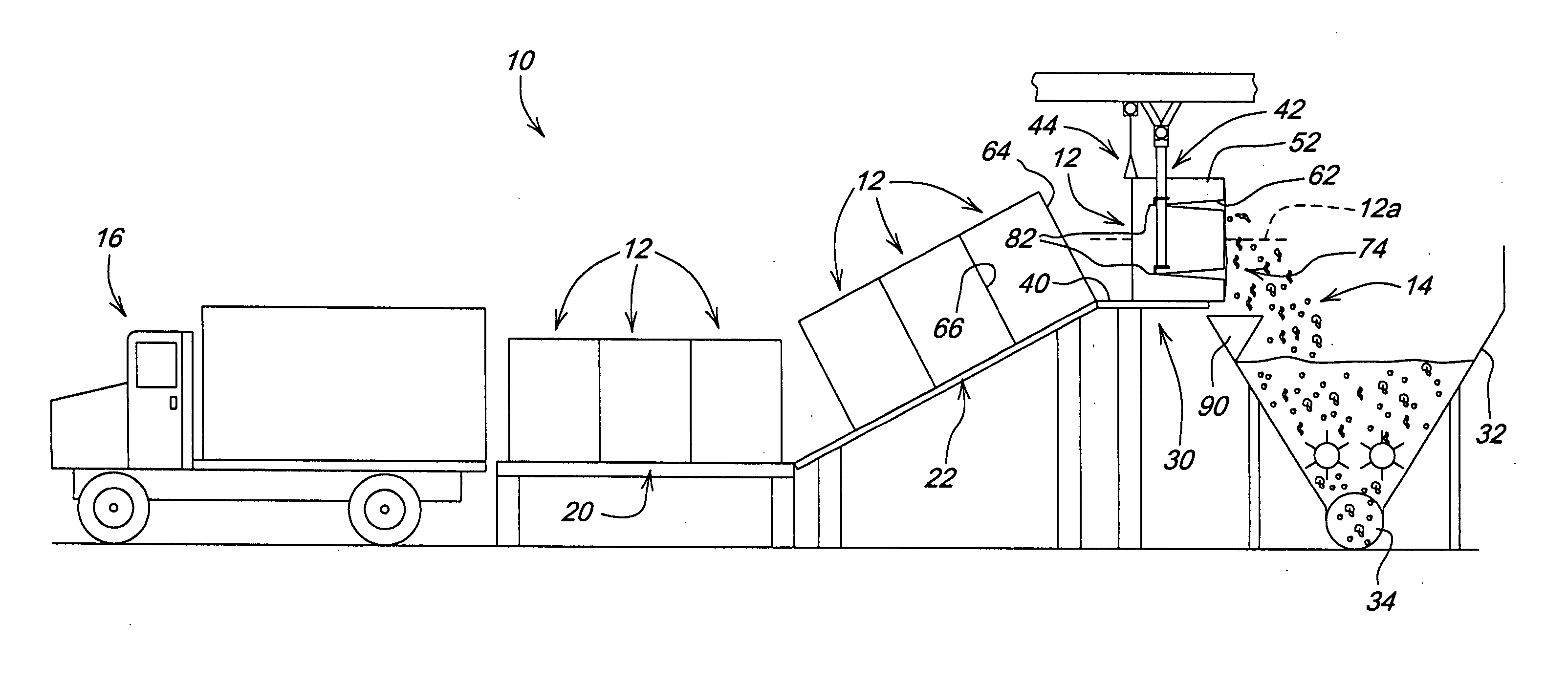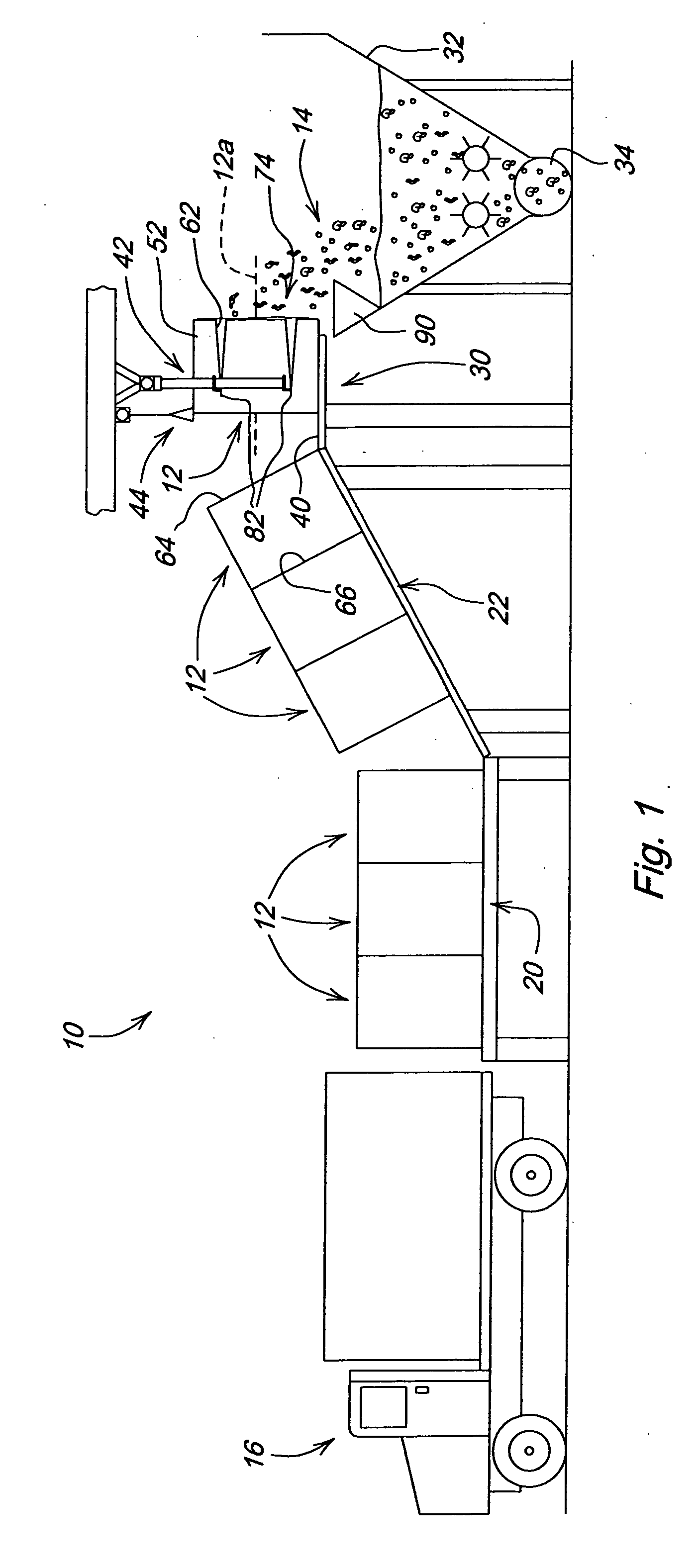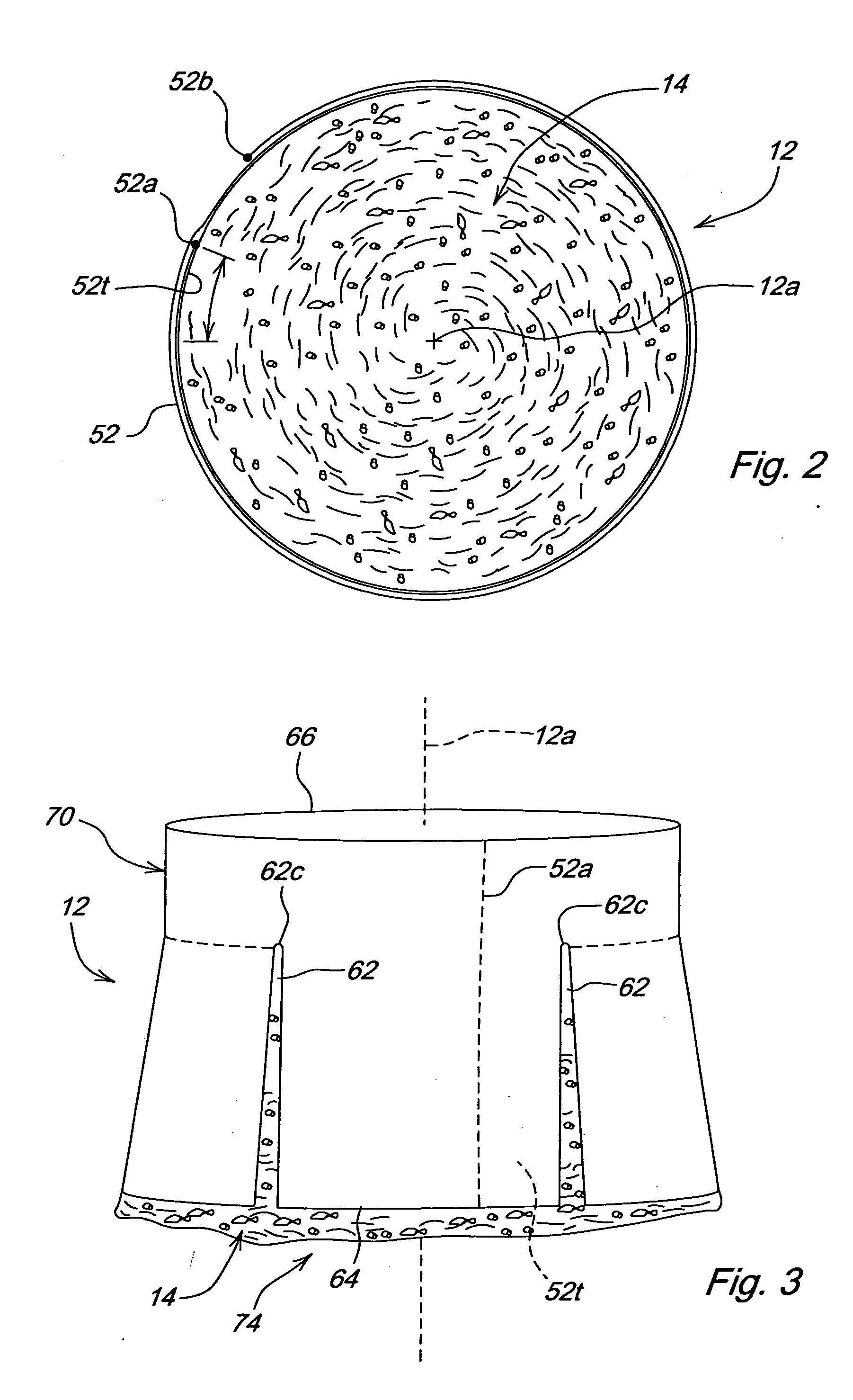Module wrap removal
a module and wrap technology, applied in the field of wrapped modules, can solve the problems of increasing the difficulty of spinning cotton into thread at the spinning mill, affecting the quality of the finished product, so as to eliminate the contamination of the wrap material of the cotton, easy removal, and easy removal
- Summary
- Abstract
- Description
- Claims
- Application Information
AI Technical Summary
Benefits of technology
Problems solved by technology
Method used
Image
Examples
Embodiment Construction
[0014] Referring to FIG. 1, therein is shown a module-receiving area 10 of a crop processing facility such as a cotton gin. Multiple wrapped bales or modules 12 of harvested crop, shown as seed cotton 14, are delivered by a truck or other suitable transport vehicle 16 to a horizontal receiving conveyor 20. The conveyor 20 moves the bales 12 laterally away from the transport vehicle 16 onto an upwardly inclined conveyor 22 that moves the bales upwardly to a separating station indicated generally at 30 located above and at one side a hopper 32. The hopper 32 feeds a suction transfer pipe 34 that delivers cotton material to the gin.
[0015] The separating station 30 includes a horizontal conveyor 40 receiving the bales 12 from the inclined conveyor 22, a wrap cutting device 42, and a wrap removal device 44. The bales 12 include a wrapper 52 shown as a generally solid, continuous sheet of plastic material such as polypropylene that protects and maintains the integrity of the bales during...
PUM
 Login to View More
Login to View More Abstract
Description
Claims
Application Information
 Login to View More
Login to View More - R&D
- Intellectual Property
- Life Sciences
- Materials
- Tech Scout
- Unparalleled Data Quality
- Higher Quality Content
- 60% Fewer Hallucinations
Browse by: Latest US Patents, China's latest patents, Technical Efficacy Thesaurus, Application Domain, Technology Topic, Popular Technical Reports.
© 2025 PatSnap. All rights reserved.Legal|Privacy policy|Modern Slavery Act Transparency Statement|Sitemap|About US| Contact US: help@patsnap.com



